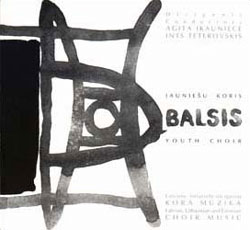Anyone who listens to a great deal of music, whether recorded or live, periodically encounters a musician who is not a “big name” or recognizable celebrity, but whose musicality and artistry belie their lack of international reputation.
So it is with the pianist Ilze Graubiņa. I listened to her recital program on this new compact disc with immense enjoyment and satisfaction, marveling I had heard so little of her before, and saddened that I will never have the opportunity to hear her play in person. She died at the beginning of this year just short of her 60th birthday, not long after this CD was released. Though familiar to many Latvians, she is not a household name. A daughter of the beloved Latvian composer Jēkabs Graubiņš (especially noted for his imaginative and elaborate choral arrangements of Latvian folksongs), her mother Ērika was also a pianist and her sisters are remarkable professional musicians as well.
A student of the noted Russian pianist and pedagogue Yakov Flier, among others, Graubiņa played with distinction at many international competitions, winning first prize at the 1964 J.S. Bach Piano Competition. She went on to record a number of discs for the Soviet Melodiya label and taught piano for many years at the Rīga Conservatory, with many successful pupils. She performed at many music festivals in the Soviet bloc during the Communist years, and in the last decade was able to tour abroad more widely, but never succeeded in establishing an international reputation.
A pity, for her playing is magnificent! On this recording she performs music from a variety of periods and styles. The program opens with an admirably clear rendition of J.S. Bach’s “Chromatic Fantasy and Fugue,” where she allows the music’s structure to unfold without fussiness. From the same period, but a world away in style, is the Italian-born Spanish composer Domenico Scarlatti. Graubiņa tosses off five of his elaborately ornamented sonatas effortlessly, easily matching the grace, poetry, and clarity of more renowned interpreters such as Pletnev and Pogorelich.
Also from Spain, though a century and a half later, is the music of Isaac Albeniz, represented here by the “Suite Espanola.” While its character has remained distinctive throughout many centuries of music history and has prospered under many approaches, the Spanish music of Albeniz’s late-Romantic sound-world is probably closest to most listeners’ sensibilities and affections. The poetic beauty of his evocations is superbly rendered by Graubiņa, and her playing concedes little to that grand dame of Spanish pianists, Alicia de Larrocha.
Closer to our own time, and in a completely different vein, is the “Ninth Piano Sonata” by Sergei Prokofiev, dating from the mid-1940s. With Prokofiev’s return to the Soviet Union in the late 1930s, his rather acidic and motoric style had mellowed into a lusher and more populist idiom, becoming even more nostalgic and gentler in the later 1940s. Listening to Graubina’s loving and sympathetic interpretation, I was struck by the transitional character of this sonata, straddling Prokofiev’s later styles. This work is also not as frequently heard as Prokofiev’s previous three piano sonatas, so its inclusion here is particularly welcome.
Recording quality in the Scarlatti, Albeniz and Prokofiev works is very clear and pleasant. The piano is well-balanced and clear but not overly bright, in a comfortable sound perspective. The Bach is somewhat more distant and muted—could this be a reissue of her earlier Melodiya recording of this work? No information is given on venue or dates for any of the performances. Packaging is utilitarian with notes on the performer, in Latvian and English, but not a word about the music.
As I said at the outset, an enormously enjoyable and satisfying program, pleasantly balanced and exquisitely played. This is a disc I will return to frequently with great pleasure, and with deep regret that this fine musician is no longer among us.
Details
Ilze Graubiņa
Ilze Graubiņa
BaltAsia Foundation, 2000




